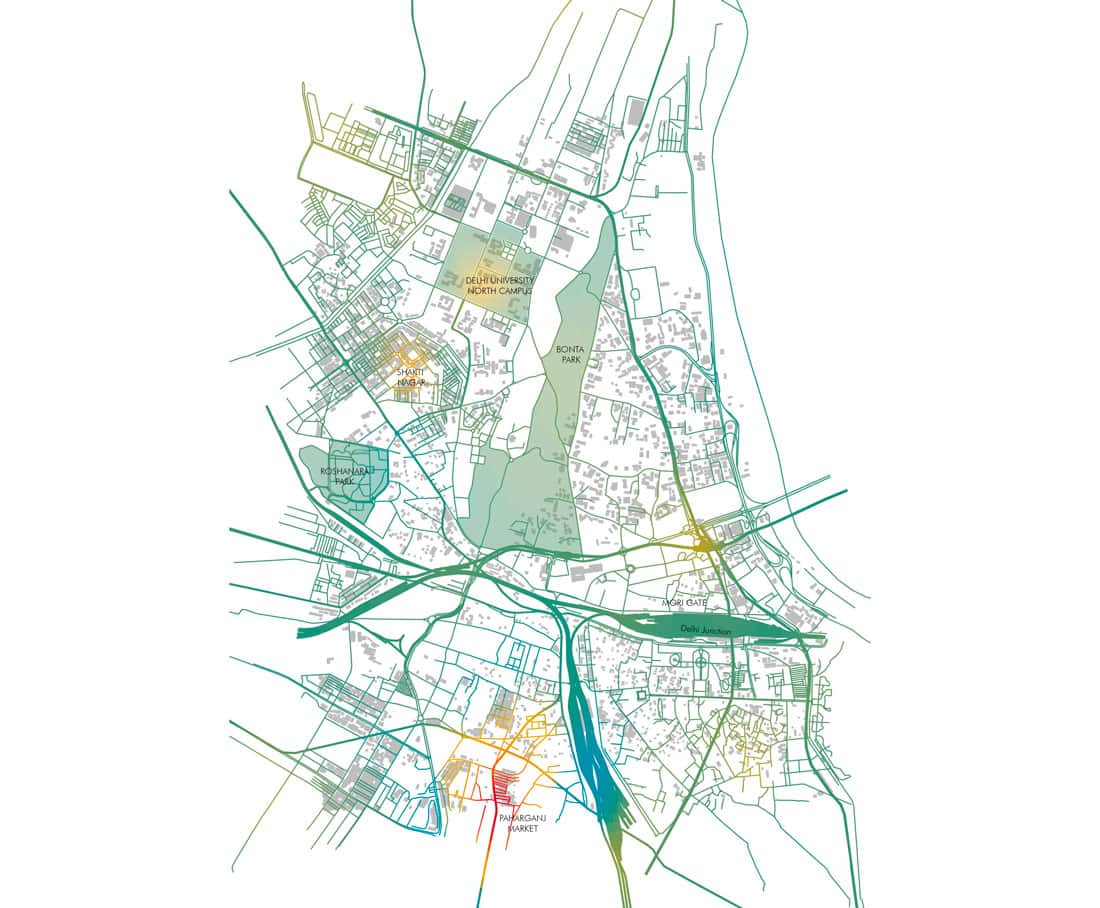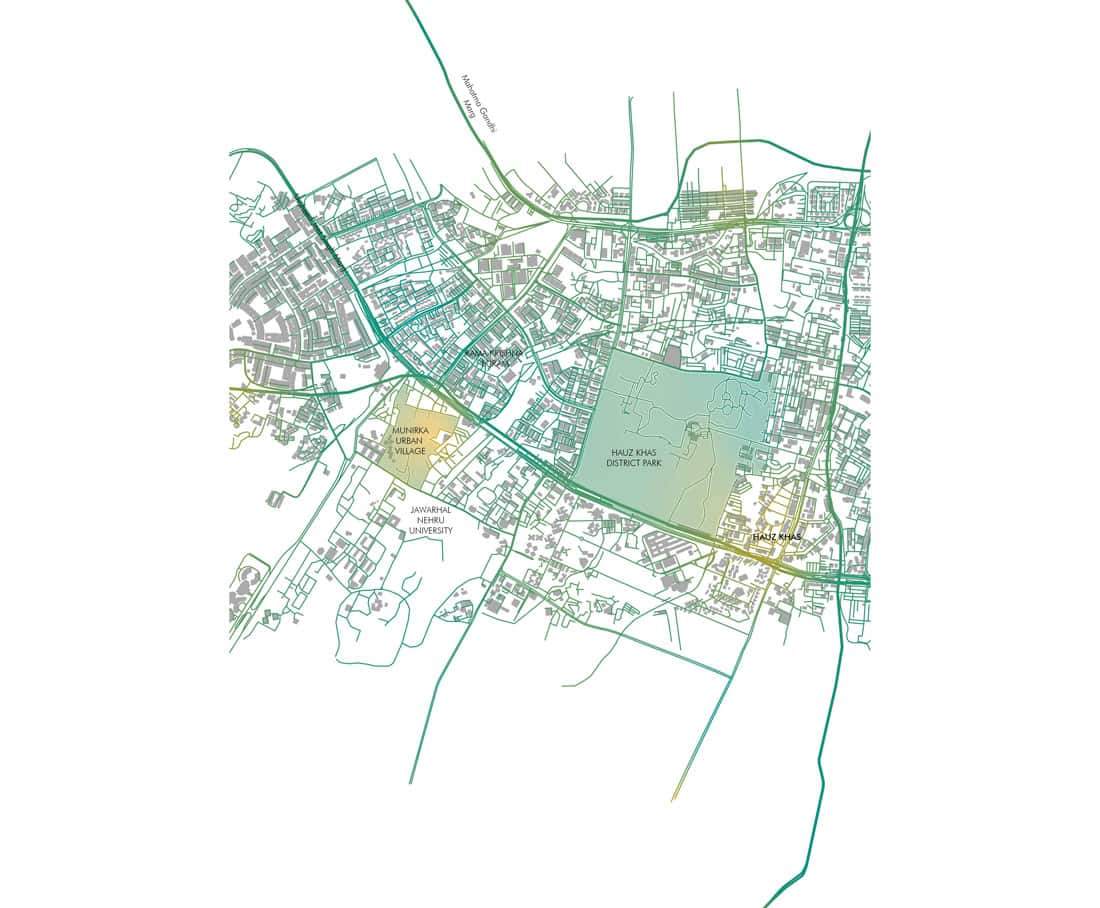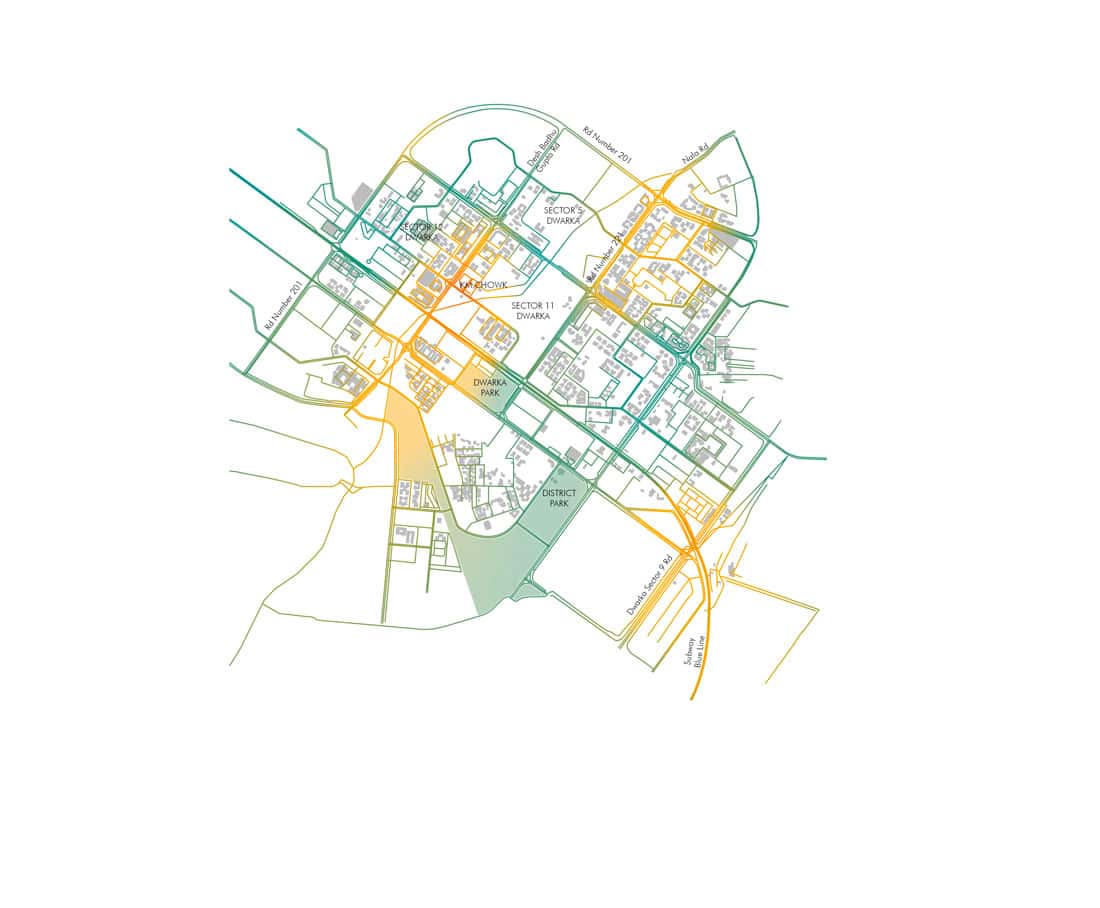In 1994, Tokyo was already a city with one of the lowest crime rates. With only 60 crimes per 100,000 people, it had earned a reputation as one of the safest cities. Unfortunately, not everyone experiences the same sense of safety: at least 70% of women commuters have experienced harassment. A women’s group in Osaka, Japan’s second-largest city, says three-quarters of women in their 20s and 30s who responded to a questionnaire reported encountering a groper— or chikan in Japanese, at least once.[1]
There are reasons why this is quite prevalent in Japan. First, there is a relaxed attitude toward gropers. Both society and institutions consider the harassment as a low-level misdemeanor. Some incident reports mention that surrounding passengers were aware of the harassment happening, however they chose not to get involved. In other situations, reporting the incident to the police will not bear any fruit. Police reporting, in addition to sometimes being complicated – taking hours and with no female officers present while reporting – is also not always considered serious. In one case, the victim was told to reconsider pressing charges because the perpetrator was still a minor, with perhaps a bright future ahead.[2] This unfriendly system can only deter reports; hence, only some 10% of victims file a report.[3]
Furthermore, institutionalized misogynism allowed a self-confessed groper to publish a book. The book titled Gropers Diary sold out its first print of 40,000 copies and was on its way to a second print before a women’s group put pressure on the publisher to cancel. The glorified sex offender, however, was free to roam the streets of Tokyo.[4]
Another reason for continued prevalence is that groping is still considered minor harassment. This was as inaccurate in the past as it is now. Groping does not only include over the clothes touching, but also finger thrusting in the nether region.[5] And the victims are not only women from 20 to 30 years old, but as young as 13.[6] What has been considered as only harassment should be considered sexual assault.
In 1994, Japan began an effort to curb groping. The issue, which had been shrugged off as just a distasteful nuisance, was then recognized in terms of both the extent and the human cost of this so called low-level sexual crime. The city implemented policies to help battle gropers: mobilizing more than 70 officers where the most groping incidents were taking place and assigning permanent counselling corners, staffed by female officers, in two of the biggest stations: Tokyo Central and Shinjuku.[7]
Today, crime rate in Japan is even lower than 20 years ago.[8] Gun-related crime was responsible for only three deaths, compared 15,612 deaths in the US.[9] Unfortunately, even with all the efforts Tokyo invested in, women are still experiencing a similar situation, if not worse.
More technology is being used to battle harassment: from using CCTV, apps that makes loud noises that scare off harassers, having all camera phones make an audible shutter sound, to apps that report a chikan—aptly named Chikanradar.[10]
Unfortunately, a survey conducted by WeToo Japan in 2019 still found that 70% of women and 30% of men say they have experienced public harassment. At least 48% of women and 9% of men reported being touched, whereas 42% of women and 12% of men said strangers had pressed their bodies against them suggestively. And around 20% of female respondents reported strangers exposing themselves.[11]
Non-sexual physical violence was also a concern. No less than 19% of women said that they had been hit by someone, with a slightly lower 16% of men also having experienced assault.
Groping is so prevalent in Japan that the word chikan has since become a global expression. But to say that this a problem that only happens in Japan could not be further from the truth. In 2007, an online questionnaire found that 63% of New York public transit users had been sexually harassed on the subway or at a subway station. In 2014, around 20% of Los Angeles public transit users said they had felt unsafe in the past month due to unwanted sexual attention on the Metro. And in 2016, 21% of Washington, D.C. public transit users were victims of sexual harassment.[12]
In Cairo and Alexandria, Egypt, as high as 99.3% of women surveyed reported having experienced sexual harassment, most commonly in the form of touching or groping.[13] Korea Transport Institute published a survey in which about 26% of women said they had experienced sexual harassment on buses and 21% on the subway, compared to 2.3% and 2.4% of men respectively.[14] ITDP Brazil’s study called “Women and Children’s Access to the City”, conducted focus group discussions with low-income and black women in the outskirts of Recife’s metropolitan area and found that harassment was perceived as an inevitable occurrence in women’s daily life.[15]
Sexual harassment on public transportation is not solely an issue that a single culture has to deal with. Neither is it an issue exclusively for developing or developed countries. Plus, what may be surprising: it is a problem not only faced by women, but also by men.
The Gap and the Map
In 2012, Jyoti, a 23-year-old medical student, and her male companion were raped and tortured on a moving bus. She survived for 11 days and managed to name the perpetrator before succumbing to her injuries. The incident sparked public outcry in India and all over the world. According to Eve Ensler – an activist who worked on sexual violence for 15 years in India – the incident broke through the consciousness and was on the front page, in newspapers articles every day, in public discourse, and in discussions among students. India was taking action in fast-tracking new laws and sexual education, as well as studying the roots of patriarchy and toxic masculinity and how it can lead to sexual violence.[16]
Delhi North
Delhi Munirka
Delhi Dwarka
AndTheCity aimed to analyze the New Delhi harassment map based on reports compiled by Safecity. The data was then converted into a heat map that can translate where harassment and violence have happened. Included in these numbers are verbal, non-verbal, physical, and other types of violence. Samples were taken from three places in New Delhi where incidents occurred: Central Delhi, Munirka, and Dwarka. Munirka to Dwarka was the route Jyoti took to commute home. By analyzing the map, the public can pinpoint where improvements need to be made.
Dwarka is a residential area located in western New Delhi. The area is assigned as a diplomatic enclave and is being developed as a smart sub-city under the Delhi Development Authority. The map indicates that KM Chow has the highest harassment report. Munirka is an urban village located in south-west Delhi. The area is close to Jawaharlal Nehru University and the Indian Institute of Technology Delhi campuses. Close to Munirka there are also a high number of harassment incidents in Hauz Khas, which is a popular area for backpackers.
However, the incidents in both places do not occur as much as in Paharganj. The area has been a backpacker hub since in the 70s, due to its popular cheap lodgings and restaurants. Unfortunately, the area also has a bad reputation in relation to women’s safety. Not only is there a high number of sexual assaults, there is also a history of sexual trafficking with minors from neighboring countries. Hotels and lodgings are known to engage in the sex trade and other illicit activities resulting in the death of tourists. The local tourism body encourages local and international backpackers to stay at Hauz Khas instead.
India is one of the few countries that easily provides accessible maps of harassment and violence. The map should not be seen only as representing the city’s level of misogynism; it should also be seen as indicating a high level of awareness if what is considered as harassment and assault, and an eagerness to address the problem. Having a map of harassment is better progress than not having one.
The incident above was one of the extreme realities in the world where public transportation failed to provide a safe space. But safety alone is not the problem; there are further subsequent difficulties faced by women. An analysis from the Office of National Statistic shows that women in the UK are more likely than men to leave their jobs because of a longer commute. Women tend to be the main providers of childcare and unpaid work, while men are more likely to tolerate longer journeys in return for higher pay.[17] The analysis, however, did not mention safety as one of the reasons, even though there are reports that indicate women in the UK experience similar problems to women in Japan, albeit in smaller numbers.
According to Sarah Kaufman of New York University’s Rudin Center for Transportation, women in New York spent hundreds of dollars each year on ride-sharing apps and taxi services, both for convenience – to avoid carrying a stroller up and down subway steps – and for personal safety.[18] In other research, women modified their behavior in ways such as avoiding a particular train line or dressing differently. These modifications result in an additional median cost of $600, compared to $0 for men.[19] Women in low-income industries often juggle work in remote places with shifts in the early morning or late evening. If they don’t have a vehicle, they are reliant on public transportation, which brings a whole new set of potential encounters with harassment, catcalling or worse. Women in these situations may avoid a job altogether for fear of a potentially dangerous commute.
Access to work is not the only aspect hindered by fear for safety. In Rwanda, a study showed that 55% of women were concerned about their safety when going to educational institutions after dark. In India, girls 15 to 19 years old try to ensure their own safety by avoiding certain places, staying indoors after dark, dressing carefully, and carrying defensive weapons such as pepper spray and safety pins.[20]
Limited access to education due to commuting safety also happened in the US. Limited school transportation has been linked to decreased school choice. Schools that are considered good are more likely to be located in higher income areas; therefore children with lower incomes, minorities, single parents, or parents with less education will most likely not have access to such schools. Low-income students generally have farther to go and less capacity to get there.[21]
Not having a safe means of transportation to commute reduces the freedom of movement for women and girls. Furthermore, not only is it detrimental to the pay gap, but also in terms of access to job opportunities, education, and healthcare services.
The City
Emily May, the founder of Hollaback!, believes public transport will be the next frontier of the #MeToo movement.[22] Can the city help address the problem?
There are visible – and sometimes designed – solutions that can be employed. One of them is separate trains. Cities like Jakarta and Tokyo offer women-only trains. Jakarta had a separate train in 2012, which was removed after only seven months because it was largely empty. In 2019, the separate train was resurrected after a survey in which 58% of respondents claimed that a dedicated car was a necessity.[23] In Tokyo, 82% of women favored the introduction of separate trains, even though much less prefer to use it. Leipzig, Germany also introduced a separate train, which received a mixed reception: some welcomed it, while others considered it backward.
But a separate train doesn’t offer an effective measure to stop harassment. One of the objections was that having a separate train could add to accusations against victims on the mixed train for putting themselves at risk.[24] While it may be considered backwards and a form of discrimination by some, many see it as a means of survival.
SNCF, France’s state-owned railway company, offered another design-based solution: better lighting, clear lines of sight, eliminating nooks, corners, and isolated areas that might facilitate assault, lively waiting areas in which everyone can feel comfortable, friendly drivers and public transportation staff to promote trust. All this coupled with a greater presence of transit and local police, visible video cameras to document and deter assaults, and training for transit operators on the best ways to de-escalate confrontations.
Another successful example in Mexico is Hazme el Paro. The project included a marketing campaign that defined actions for bystanders to follow so as to become interveners in a non-confrontational manner, as well as community and sector training (bus drivers, police officers) and IT components such as installing Wi-Fi in buses and making a mobile application available for reporting different kinds of sexual harassment. The project resulted in changing public behavior as reflected in a higher willingness to act against instances of harassment, mainly by men. The perception of risk increased by 15% in the treatment group, which can be interpreted as a proxy for increase in awareness of the security situation.
Design-wise, creating a safe space and the perception of space is a way to encourage safety itself. However, separation is not the best gesture in the pursuit of an equal society. A separate train is a form of escapism, trying to patch the current problem with a temporary solution while ignoring a bigger problem: sexism.
One recommendation from the US Department of Transportation involves better communication with women. Local transit agencies are encouraged to consult with the public on planned services to help determine locally preferred options and to prepare for changes to services and routes within the community, and to consult with women’s groups and civic advocates on their behalf. It is difficult to recognize a problem if you aren’t the one who experiences the problem. Furthermore, the local transit agencies are encouraged to include innovative uses of information and communication technologies to report cases of harassment.
Perhaps what is missing from Tokyo is women’s involvement in decision making. This difficulty is addressed by the European Transport Workers’ Federation as they aim to increase women’s representation in transportation leadership. However, this effort is also faced with its own problems. According to the 2017 survey by the European Transport Workers’ Federation, 63% of respondents had faced violence: 49% from customers, 22% from colleagues and 17% from the management. Among the women who reported an incident, 80% did not believe that their complaint had negative consequences for the perpetrator or made the workplace safer. This is a serious concern for women who seek to develop careers in the transportation sector.
The US Department of Transportation sees similar problems, and, following a survey, they received input to provide greater a presence of transit and local police, video cameras to document and deter assaults, and training for transit operators on the best ways to de-escalate confrontations. When these efforts were implemented in the Los Angeles METRO bus system, it resulted in a 39% decrease in total crime and a 60% decrease in operator assaults between 2017 and 2018.[25]
Japan’s economy has only prioritized empowering women in the past decade.[26] Unfortunately, this is reflected in their efforts to involve women as lawmakers In Japan. Only 46 of 465 lower house lawmakers are women – just shy of 10% – compared to a 25% global average and a 20% average in Asia.[27] Japan ranked just below the Democratic Republic of Congo.
If women and girls are safe on public transportation, it improves their access to educational and economic opportunities. For people with a disability, accessible transportation is essential to securing employment and covering their own costs of living. And improvements in accessibility can benefit many other urban residents, notably the elderly.[28]
Last but not least, men and women have a role to play in addressing the root causes of gender inequality, discrimination and violence, namely by promoting a culture of respect and equality for everyone in all contexts: at home, in schools, at work and in public spaces. Aside from that, good credible data can reliably help inform policies and programs, as well as assessing progress. In the end, design can only do so much. Promoting the full participation and leadership of women, children, people with disabilities and other vulnerable groups on issues that affect their lives is a necessity.














